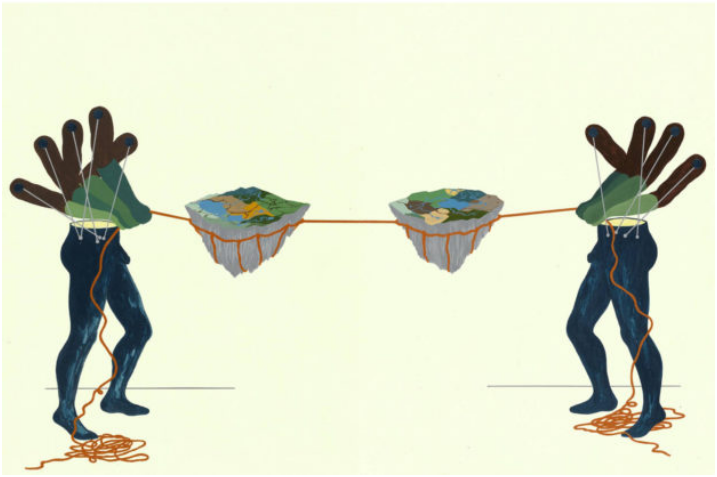Otobong Nkanga, ar/ge kunst, Bolzano, IT

Opening 23 November, 7 pm
Curated by Emanuele Guidi
Artist Otobong Nkanga (Lagos/Antwerp) returns to ar/ge kunst for her first solo show in Italy having previously participated in the programmatic exhibition Prologue Part II - La Mia Scuola di Architettura in November 2013.
Gathering recent works, ongoing projects and two new commissioned pieces, A Lapse, a Stain, a Fall articulates a further step in Nkanga?s research about the manifold values of natural resources in the Anthropocene; a process she carries on alongside an unceasing exploration of the reciprocity between earth and language morphologies.
Employing sculpture, drawing and performance, but also writing, publishing and pedagogical formats, Nkanga looks at the notion of land as a geological and discursive formation, often taking as her starting point the systems and procedures by which raw materials are locally dug up, technologically processed and globally circulated. From there she follows the threads that intertwine ores, material culture and the construction of desire with the redistribution of power and knowledge.
Otobong Nkanga conceived A Lapse, a Stain, a Fall as an organic display of artworks that unfolds in space following a chromatic rhythm, from black to an increasingly composite palette of colours, a progression of pieces "germinating" alongside a new, central artwork that, as an artery, runs the length of the architecture from wall to wall, turning the exhibition into a living, diasporic organism where body parts hold together by their skin.
The centrality of the notion of the body in Nkanga?s thinking resonates deeply with the title of the newly commissioned work, Veins Aligned, a 26 metre sculpture that lies on the floor of ar/ge kunst and is composed of strata of glass and marble from the Lasa quarries, both materials having been crafted in collaboration with local experts. It is a sculpture that evokes the deep feeling that Nkanga nurses for matter, i.e. the urge to produce a continuity between materials that can function as a support structure as well as recognizing all its layers as carriers of situated knowledge; from the skin and its desired lustre through the complex molecular structure with its geotechnological properties. It is a knowledge that deserves to be excavated while also making visible how every process of extraction runs the risk of becoming capital extraction and potentially also a violent act towards a body, be it of humans, materials, or lands.